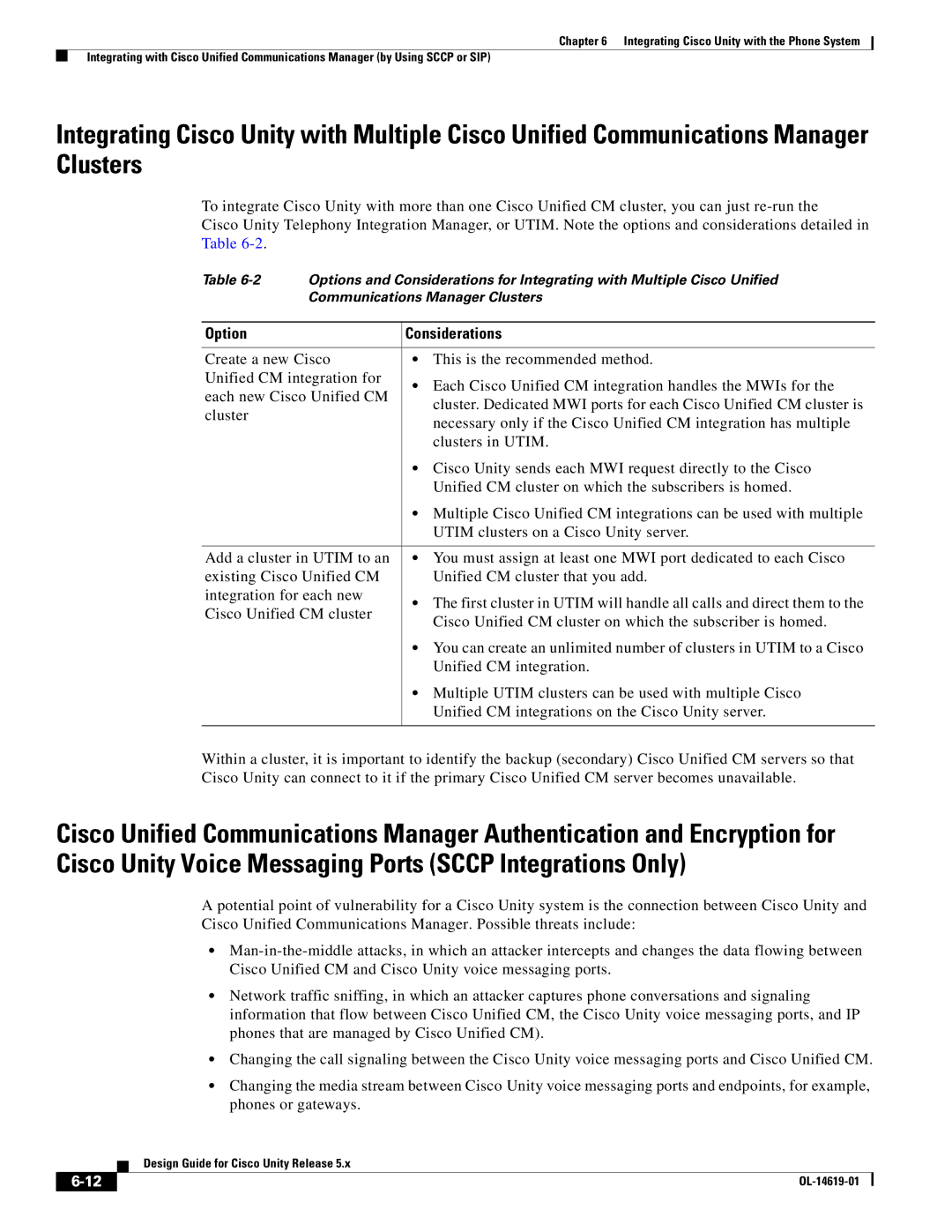
Chapter 6 Integrating Cisco Unity with the Phone System
Integrating with Cisco Unified Communications Manager (by Using SCCP or SIP)
Integrating Cisco Unity with Multiple Cisco Unified Communications Manager Clusters
To integrate Cisco Unity with more than one Cisco Unified CM cluster, you can just
Cisco Unity Telephony Integration Manager, or UTIM. Note the options and considerations detailed in Table
Table
Communications Manager Clusters
Option | Considerations | ||
|
|
| |
Create a new Cisco | • | This is the recommended method. | |
Unified CM integration for | • | Each Cisco Unified CM integration handles the MWIs for the | |
each new Cisco Unified CM | |||
| cluster. Dedicated MWI ports for each Cisco Unified CM cluster is | ||
cluster |
| ||
| necessary only if the Cisco Unified CM integration has multiple | ||
|
| ||
|
| clusters in UTIM. | |
| • Cisco Unity sends each MWI request directly to the Cisco | ||
|
| Unified CM cluster on which the subscribers is homed. | |
| • Multiple Cisco Unified CM integrations can be used with multiple | ||
|
| UTIM clusters on a Cisco Unity server. | |
|
|
| |
Add a cluster in UTIM to an | • | You must assign at least one MWI port dedicated to each Cisco | |
existing Cisco Unified CM |
| Unified CM cluster that you add. | |
integration for each new | • | The first cluster in UTIM will handle all calls and direct them to the | |
Cisco Unified CM cluster | |||
| Cisco Unified CM cluster on which the subscriber is homed. | ||
|
| ||
| • You can create an unlimited number of clusters in UTIM to a Cisco | ||
|
| Unified CM integration. | |
| • Multiple UTIM clusters can be used with multiple Cisco | ||
|
| Unified CM integrations on the Cisco Unity server. | |
|
|
| |
Within a cluster, it is important to identify the backup (secondary) Cisco Unified CM servers so that Cisco Unity can connect to it if the primary Cisco Unified CM server becomes unavailable.
Cisco Unified Communications Manager Authentication and Encryption for Cisco Unity Voice Messaging Ports (SCCP Integrations Only)
A potential point of vulnerability for a Cisco Unity system is the connection between Cisco Unity and Cisco Unified Communications Manager. Possible threats include:
•
•Network traffic sniffing, in which an attacker captures phone conversations and signaling information that flow between Cisco Unified CM, the Cisco Unity voice messaging ports, and IP phones that are managed by Cisco Unified CM).
•Changing the call signaling between the Cisco Unity voice messaging ports and Cisco Unified CM.
•Changing the media stream between Cisco Unity voice messaging ports and endpoints, for example, phones or gateways.
| Design Guide for Cisco Unity Release 5.x |
|
